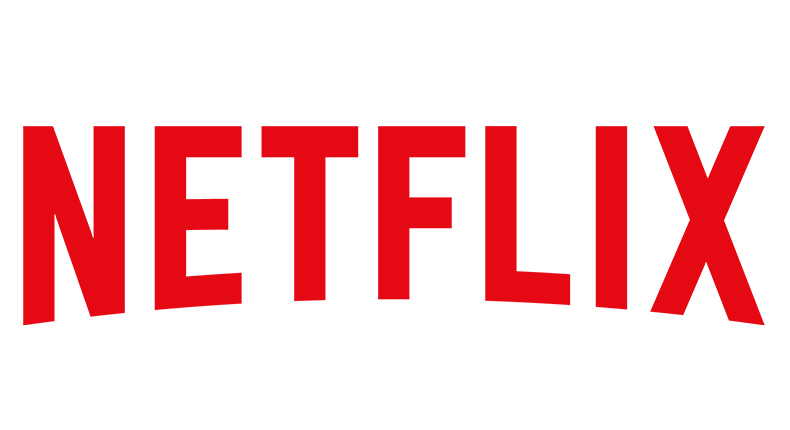What Hi-Fi? Verdict
It's nigh-on impossible to find meaningful fault with Netflix
Pros
- +
Excellent video quality
- +
Big, easy-to-navigate catalogue
- +
High quality Originals
Cons
- -
Rarely first for big film releases
Why you can trust What Hi-Fi?
Netflix just keeps on getting better, making a more compelling case for your money at every turn. It’s everything you want from a video streaming service: simple to use, available on your preferred platform and filled with content you want to watch.
But it's now got more rivals than ever and they've also upped their game, so is Netflix really the best video streaming service out there?
Pricing
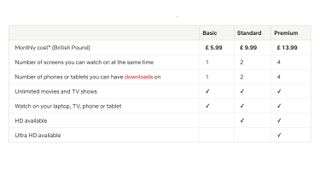
Netflix subscriptions start at £5.99 ($8.99, AU$10.99) per month for standard-definition streams to a single screen. Up your spend to £9.99 ($13.99, AU$15.99) per month and get high-def stuff available to watch on a couple of screens simultaneously.
Or go the whole hog (provided you’ve already gone the entire pig on a 4K Ultra HD TV) and spend £13.99 ($17.99, AU$19.99) per month for 4K content on as many as four screens at a time.
MORE: How to use Netflix Party: watch Netflix with friends online
Features
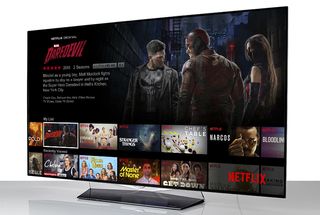
It goes without saying not all content is available in HD (720p) or Full HD (1080p), let alone Ultra HD or 4K. One of the great pleasures of a Netflix subscription is happening upon classic films such as Easy Rider and old episodes of cult TV shows such as Peep Show, and it would be optimistic in the extreme to expect them to represent the state of the technological arts.
But there’s now a huge stack of 4K content available, from The Crown and Last Chance U to Shadow Bone and Snowpiercer, and that stack is forever growing.
Netflix has a continuing good relationship with Sony Pictures that also grants the streamer exclusive rights to some Sony films. There's also the excellent Studio Ghibli oeuvre now available in most countries.
In terms of bespoke content, Netflix distances itself from any nominal competition.
Netflix now prioritises its own content to such an extent that it seems less committed to adding blockbuster films from other studios than its main rival Amazon Prime Video. And now that Disney+ is on the scene, it'll likely never be the first streaming service to add a Disney, Marvel or Star Wars title to its catalogue. But Netflix still has a strong selection of older favourites and not-too-aged blockbusters such as, at the time of writing, Arrival and Rocketman.
And as a content provider in its own right, Netflix goes from strength to strength, whether that's through cinematic adventures or its increasingly impressive run of excellent documentary features and series.
And if you have an HDR (High Dynamic Range) compatible TV, there's now loads of HDR content on Netflix too. It's not immediately obvious, as there isn't an HDR section anywhere in the menus, but if you type HDR into the search box you'll find a list of HDR content such as After Life, The Witcher and Lupin. You'll see an HDR logo (or Dolby Vision logo, if your TV supports it) on relevant content.
MORE: Best 4K TVs 2021

Provided your broadband connection is up to the task, it has always been a fuss-free and stable experience, and its broad compatibility is a strong sell too.
PCs and Macs, Google Chromecast, Apple TV, Amazon Fire TV devices, Roku streamers, any smart TV worth its salt, games consoles, Blu-ray players from all the big brands, tablets and phones, whether iOS, Android or Windows, are all on the menu. In fact, there's a strong argument that if a smart device doesn't have Netflix, it can't really be considered smart at all. It's certainly the first app we look for whenever testing a new streaming product.
There's good news for mobile users too. In the early days it wasn't possible to download anything from Netflix to watch offline. Since November 2016, though, content can be downloaded to your phone and tablet to watch, glitch free, at your leisure on the Netflix app – and it does not count toward the limit of how many screens you can watch on at the same time. You can't download literally everything, but there's plenty of choice and lots of the most popular content is there for you to stick on your device.
MORE: Amazon Prime Video review
Ease of use
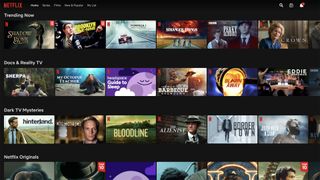
Ergonomically, things could hardly be simpler.
Aside from the TV app’s rather retrograde A-Z keyboard (rather than QWERTY) search function, it’s straightforward to browse, create a shortlist and enjoy Netflix’s more-hit-than-miss recommendations based on your previous viewing habits.
You can establish multiple user profiles, including parental locks to prevent the kids stumbling onto Zombeavers or similar.
There are also handy and fun features such as Play Something/Shuffle Play for when you're stuck for what to watch next, and Netflix Party to watch online with friends.
MORE: 25 Netflix tips, tricks and features
Performance
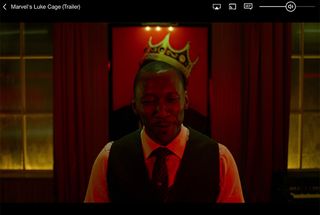
Whether 4K, Full HD or standard definition, Netflix serves video streams at exactly the sort of quality you expect. Watch a 4K HDR stream such as Formula 1 Drive to Survive on an appropriate display and it’s prodigiously detailed, vibrant and stable.
Colours pop, contrast is punchy and the sheer amount of information available for your enjoyment is thrilling. It almost goes without saying, but if you own a 4K TV or 4K projector, the top tier £14 ($18, AU$20) subscription should be considered almost compulsory.
It’s all equally high-contrast, steady-motion, fine-detail good news for Full HD too. Native 1080p content looks accomplished, though obviously the exact amount of detail revealed in dark scenes (for instance) is to an extent dependent on the source material.
MORE: 15 of the best movies of the 1990s to test your home cinema

Given a fighting chance, though, Full HD stuff such as Collateral is vivid, stable and eminently watchable. As regards standard-def stuff, you take your chances.
The majority of decent TVs – and certainly all the screens we recommend – are equipped with effective upscaling engines and won’t make you regret your partiality for schlocky thrillers such as Ravenous.
5.1 audio is now available on many titles, and Netflix serves it up in the same manner as it does pictures: robustly and positively.
Provided you have the necessary home cinema set-up (or even the right soundbar) at home, Dolby Atmos is also available on a good portion of Netflix's own TV shows and movies. It presents an altogether more substantial and immersive sound than anything your TV’s integrated speakers can manage.
Verdict
It’s difficult to think of a downside to Netflix. Set your mind to it and you can search for plenty of films it doesn’t have, but the same is true of any movie streaming service and Netflix is better than almost all of those when it comes to the combination of original content, cherry-picked classics, video and sound quality, usability, and individual recommendations.
Disney+ will have turned many a head, but there are plenty who are left cold by the House of Mouse's output, and, with recent price hikes to Netflix and Disney+, signing up to both services is not quite the financial no-brainer it once was.
Sure, the Premium tier (£13.99, $17.99, AU$19.99) now feels a more considerable monthly outgoing than before. All the same, if we had to live with just one video streaming service, it's no contest. The quality, consistency and breadth of content available mean that Netflix is still king.
MORE:
Amazon vs Netflix - which is better?
9 simple ways to get better Netflix recommendations
What Hi-Fi?, founded in 1976, is the world's leading independent guide to buying and owning hi-fi and home entertainment products. Our comprehensive tests help you buy the very best for your money, with our advice sections giving you step-by-step information on how to get even more from your music and movies. Everything is tested by our dedicated team of in-house reviewers in our custom-built test rooms in London, Reading and Bath. Our coveted five-star rating and Awards are recognised all over the world as the ultimate seal of approval, so you can buy with absolute confidence.
